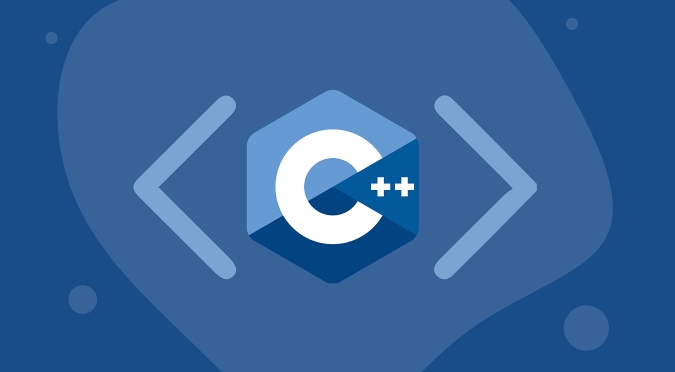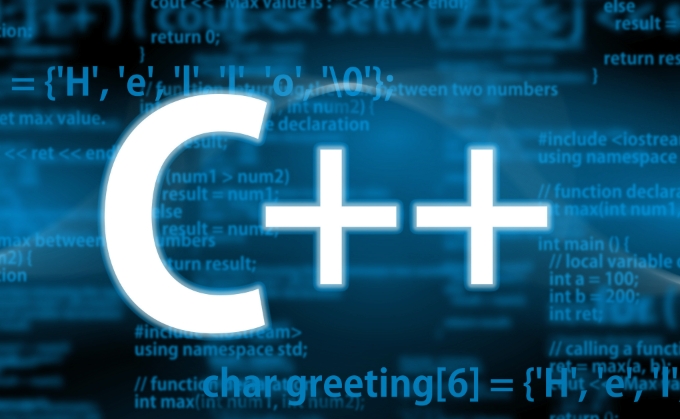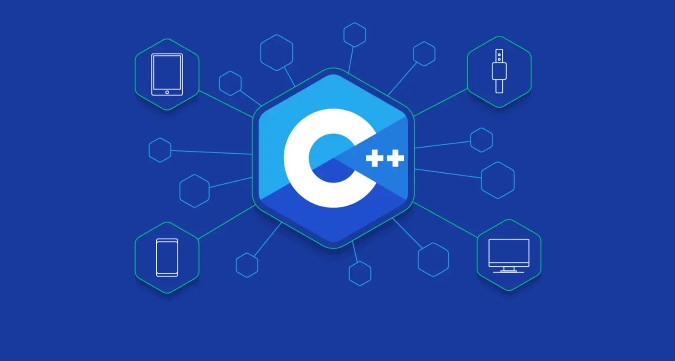A vtable in C is a compiler-generated mechanism that supports dynamic polymorphism by enabling virtual function calls to resolve based on the actual object type at runtime. It works by storing function pointers to the most derived version of each virtual function, and each object contains a hidden pointer (vptr) to its class’s vtable. When a virtual function is called through a base pointer or reference, the program uses the vptr to locate the correct vtable and then invokes the appropriate function. A vtable is created when a class declares or overrides a virtual function, even if it only contains pure virtual functions. Understanding vtables helps developers debug polymorphism-related issues, estimate performance overhead, and optimize code in performance-sensitive applications like game engines or embedded systems.

In C , a vtable (virtual table) is a mechanism used to support dynamic polymorphism — in simpler terms, it's how C enables virtual functions to work correctly with inheritance and object pointers or references.

When you declare a class with one or more virtual functions, the compiler creates a vtable for that class. This table holds function pointers to the most derived version of each virtual function available in the class. Each object of such a class contains a hidden pointer (vptr) to its class’s vtable. This setup allows calls to virtual functions to be resolved at runtime based on the actual object type, not the pointer/reference type.

How Does the Vtable Work?
At runtime, when you call a virtual function through a base class pointer or reference:
- The object’s vptr is accessed.
- From the vptr, the correct vtable is located.
- The function pointer from the vtable corresponding to the called method is retrieved.
- The function is invoked using that pointer.
This process ensures that even if you have a Base* pointing to a Derived object, calling a virtual function will execute the Derived version.

For example:
class Base {
public:
virtual void show() { cout << "Base"; }
};
class Derived : public Base {
public:
void show() override { cout << "Derived"; }
};
Base* obj = new Derived();
obj->show(); // Outputs: DerivedHere, the vtable for Derived overrides the show() entry, so the correct version runs.
What’s Inside a Vtable?
A vtable isn’t visible in your source code — it's generated automatically by the compiler. But conceptually, it looks like an array of function pointers.
Each virtual function in a class corresponds to an entry in the vtable. For classes with multiple inheritance or virtual inheritance, things get more complex — there may be multiple vtables per class to handle different base subobjects.
Some key points:
- The layout and naming of vtables are compiler-specific.
- You can't access or manipulate them directly in standard C .
- They're part of what makes virtual functions slightly slower than non-virtual ones.
When Is a Vtable Created?
A vtable is created by the compiler under these conditions:
- When a class has at least one virtual function.
- Or when it overrides a virtual function from a parent class.
- Even if all functions are pure virtual (
= 0), the compiler still sets up a vtable.
Also:
- Every class with virtual functions gets its own vtable.
- Objects of such classes carry a hidden vptr, which points to their class’s vtable.
So even an empty class with a virtual destructor ends up having a vtable — and objects of that class aren't zero-sized anymore.
Why Should You Care About Vtables?
Understanding vtables helps you:
- Know what's happening under the hood when using polymorphism.
- Debug issues involving incorrect function calls or slicing.
- Estimate the memory and performance overhead of virtual functions.
For instance, if you're working in embedded systems or game engines where performance matters, knowing how virtual functions add overhead can guide optimization decisions.
That said, unless you're dealing with low-level debugging or compiler design, you generally don’t need to think about vtables directly — they just work behind the scenes.
Basically, vtables are the backbone of runtime polymorphism in C . Not something you usually touch, but good to understand when things don’t behave as expected.
The above is the detailed content of What is the vtable (virtual table) in C ?. For more information, please follow other related articles on the PHP Chinese website!

Hot AI Tools

Undress AI Tool
Undress images for free

Undresser.AI Undress
AI-powered app for creating realistic nude photos

AI Clothes Remover
Online AI tool for removing clothes from photos.

Clothoff.io
AI clothes remover

Video Face Swap
Swap faces in any video effortlessly with our completely free AI face swap tool!

Hot Article

Hot Tools

Notepad++7.3.1
Easy-to-use and free code editor

SublimeText3 Chinese version
Chinese version, very easy to use

Zend Studio 13.0.1
Powerful PHP integrated development environment

Dreamweaver CS6
Visual web development tools

SublimeText3 Mac version
God-level code editing software (SublimeText3)

Hot Topics
 How to handle high DPI display in C?
Apr 28, 2025 pm 09:57 PM
How to handle high DPI display in C?
Apr 28, 2025 pm 09:57 PM
Handling high DPI display in C can be achieved through the following steps: 1) Understand DPI and scaling, use the operating system API to obtain DPI information and adjust the graphics output; 2) Handle cross-platform compatibility, use cross-platform graphics libraries such as SDL or Qt; 3) Perform performance optimization, improve performance through cache, hardware acceleration, and dynamic adjustment of the details level; 4) Solve common problems, such as blurred text and interface elements are too small, and solve by correctly applying DPI scaling.
 How to understand DMA operations in C?
Apr 28, 2025 pm 10:09 PM
How to understand DMA operations in C?
Apr 28, 2025 pm 10:09 PM
DMA in C refers to DirectMemoryAccess, a direct memory access technology, allowing hardware devices to directly transmit data to memory without CPU intervention. 1) DMA operation is highly dependent on hardware devices and drivers, and the implementation method varies from system to system. 2) Direct access to memory may bring security risks, and the correctness and security of the code must be ensured. 3) DMA can improve performance, but improper use may lead to degradation of system performance. Through practice and learning, we can master the skills of using DMA and maximize its effectiveness in scenarios such as high-speed data transmission and real-time signal processing.
 How to understand ABI compatibility in C?
Apr 28, 2025 pm 10:12 PM
How to understand ABI compatibility in C?
Apr 28, 2025 pm 10:12 PM
ABI compatibility in C refers to whether binary code generated by different compilers or versions can be compatible without recompilation. 1. Function calling conventions, 2. Name modification, 3. Virtual function table layout, 4. Structure and class layout are the main aspects involved.
 How to use the chrono library in C?
Apr 28, 2025 pm 10:18 PM
How to use the chrono library in C?
Apr 28, 2025 pm 10:18 PM
Using the chrono library in C can allow you to control time and time intervals more accurately. Let's explore the charm of this library. C's chrono library is part of the standard library, which provides a modern way to deal with time and time intervals. For programmers who have suffered from time.h and ctime, chrono is undoubtedly a boon. It not only improves the readability and maintainability of the code, but also provides higher accuracy and flexibility. Let's start with the basics. The chrono library mainly includes the following key components: std::chrono::system_clock: represents the system clock, used to obtain the current time. std::chron
 How to optimize code
Apr 28, 2025 pm 10:27 PM
How to optimize code
Apr 28, 2025 pm 10:27 PM
C code optimization can be achieved through the following strategies: 1. Manually manage memory for optimization use; 2. Write code that complies with compiler optimization rules; 3. Select appropriate algorithms and data structures; 4. Use inline functions to reduce call overhead; 5. Apply template metaprogramming to optimize at compile time; 6. Avoid unnecessary copying, use moving semantics and reference parameters; 7. Use const correctly to help compiler optimization; 8. Select appropriate data structures, such as std::vector.
 What is real-time operating system programming in C?
Apr 28, 2025 pm 10:15 PM
What is real-time operating system programming in C?
Apr 28, 2025 pm 10:15 PM
C performs well in real-time operating system (RTOS) programming, providing efficient execution efficiency and precise time management. 1) C Meet the needs of RTOS through direct operation of hardware resources and efficient memory management. 2) Using object-oriented features, C can design a flexible task scheduling system. 3) C supports efficient interrupt processing, but dynamic memory allocation and exception processing must be avoided to ensure real-time. 4) Template programming and inline functions help in performance optimization. 5) In practical applications, C can be used to implement an efficient logging system.
 The difference between programming in Java and other languages ??Analysis of the advantages of cross-platform features of Java
May 20, 2025 pm 08:21 PM
The difference between programming in Java and other languages ??Analysis of the advantages of cross-platform features of Java
May 20, 2025 pm 08:21 PM
The main difference between Java and other programming languages ??is its cross-platform feature of "writing at once, running everywhere". 1. The syntax of Java is close to C, but it removes pointer operations that are prone to errors, making it suitable for large enterprise applications. 2. Compared with Python, Java has more advantages in performance and large-scale data processing. The cross-platform advantage of Java stems from the Java virtual machine (JVM), which can run the same bytecode on different platforms, simplifying development and deployment, but be careful to avoid using platform-specific APIs to maintain cross-platformity.
 How to reduce the use of global variables in C?
May 23, 2025 pm 09:03 PM
How to reduce the use of global variables in C?
May 23, 2025 pm 09:03 PM
Reducing the use of global variables in C can be achieved by: 1. Using encapsulation and singleton patterns to hide data and limit instances; 2. Using dependency injection to pass dependencies; 3. Using local static variables to replace global shared data; 4. Reduce the dependence of global variables through namespace and modular organization of code.






